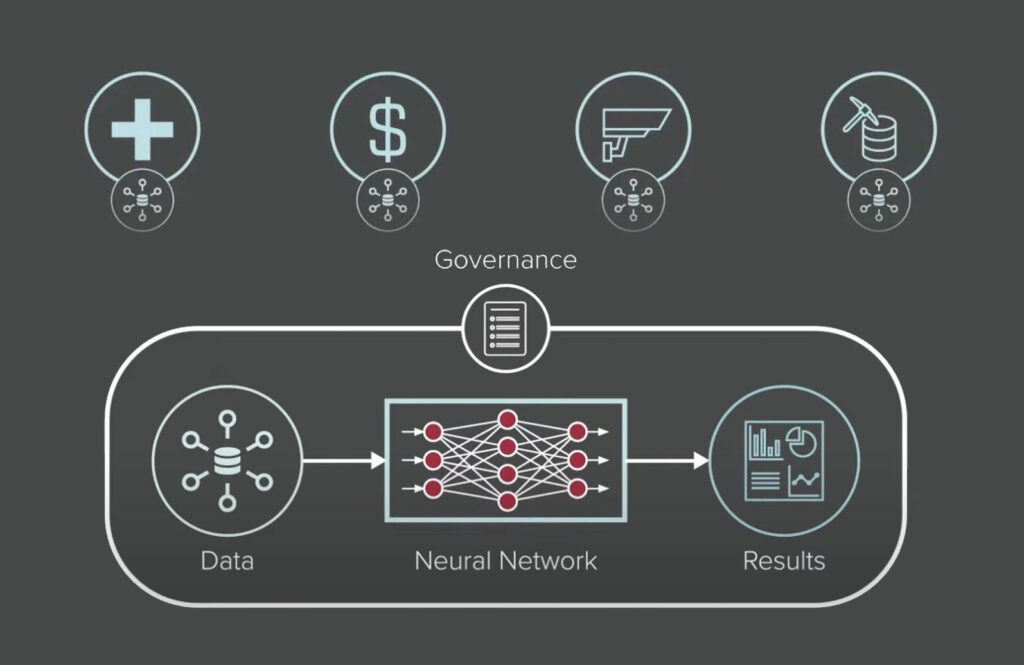AI is evolving rapidly, and a new approach is gaining momentum: agentic AI. Unlike current tools like ChatGPT, which require human input to operate, agentic AI is designed to act independently—monitoring competitors’ marketing efforts, scheduling real-time content updates, or predicting real-world equipment needs—without waiting for instructions. As these systems take on more autonomy, robust security measures become essential to ensure their actions remain safe, aligned, and trustworthy.

“A.I. co-pilots, assistants and agents promise to boost productivity with helpful suggestions and shortcuts. “
New York Times, September 2024
While this technology is still in the early stages, it’s being hyped as the next big thing in AI, promising to boost productivity and innovation. However, we’re not there yet—agentic AI is mostly a vision for the future that’s rapidly approaching.
Governance Challenges: Accountability, Regulation, and Security
Governance issues with Agentic AI and decentralized computing stem from a lack of centralized control, making regulation and enforcement difficult across jurisdictions. In decentralized systems, no single authority oversees operations, while in Agentic AI, autonomous decisions raise questions about accountability, such as who is responsible when things go wrong—developers, users, or the AI itself.

Ethical and legal compliance is a significant challenge, as both agentic AI and decentralized systems often operate beyond traditional frameworks, making it difficult to ensure they adhere to laws or ethical guidelines.
Security is another concern. Decentralized systems may suffer from vulnerabilities due to inconsistent protocols, while agentic AI can be manipulated or exhibit harmful behaviors. Existing regulatory frameworks are frequently outdated, creating oversight gaps for these emerging technologies.
Both technologies also face issues with coordination and standardization. Decentralized systems require consensus among many participants, which can slow progress, and agentic AI currently lacks widely accepted standards.
Finally, the lack of transparency in AI decision-making, combined with the difficulty of auditing decentralized systems, further complicates governance and accountability.
This is where Federated Machine Learning offers a compelling solution.
Federated Machine Learning (FedML)
FedML is an approach that enables organizations with limited data—so-called “small data” organizations—to collaboratively train and benefit from sophisticated machine learning models. The definition of “small data” depends on the complexity of the AI task being addressed.
In Pharma, for example, having access to a million annotated molecules for drug discovery is relatively small in view of the vast chemical space.
In Marketing that small data set might be in the form of brand specific visual data—brand guidelines scattered across PDFs, emails, and shared drives.

Is Federated Agentic AI the answer?
Federated Agentic AI refers to a blend of two advanced AI concepts: federated learning and agentic AI.
Federated learning enables AI models to be trained across decentralized devices or data sources while keeping the data local and secure, thereby enhancing privacy and scalability. Meanwhile, agentic AI refers to self-contained systems that, once implemented by humans, operate autonomously around the clock. These systems are capable of controlled decision-making and can adapt based on real-time data without further human intervention.
When combined, Federated Agentic AI allows multiple autonomous agents to collaborate across a secure distributed network. These agents can handle tasks independently while continuously learning from local data sources, without needing to share sensitive information across the network. This setup is particularly useful in environments like healthcare, finance, or IoT, where data privacy is critical but complex tasks still require intelligent automation.
For instance, a federated agentic system might be deployed in a network of smart devices where each device autonomously manages specific tasks (e.g., thermostats optimizing energy use) while learning from local data (e.g., weather conditions). These devices can also share insights without revealing user data, improving overall system efficiency and privacy.
Final Thoughts: Designing for new technology is a completely different challenge from a traditional design project.
Typically, users already know how to interact with familiar products—like swiping a credit card at a payment terminal or using a TV remote to change channels. But with emerging technology, there are no familiar cues, making it harder for users to figure out how to engage with it effectively. Think back to when users first encountered smartphones—there was no clear precedent for touchscreens or gestures, making it challenging to learn entirely new interactions.
Adoption of new tech often lags behind confusion and speculation, so creating a seamless, intuitive user experience is essential for success.
That said, designing something entirely new isn’t easy—but it’s exactly where the team at Velocity Ascent excels. We navigate the space between excitement for emerging technology and the need to deliver real, secure, user-centered value. By following key principles, we transform unfamiliar tech into products that people and teams love to work with.
For CMOs, this means a potential shift in how to approach marketing and customer engagement. As AI becomes more autonomous, the question will be: how do we control and guide these powerful tools to enhance our strategies while still ensuring privacy? Ultimately it is about using AI in smarter, more effective ways to drive business growth.
Sources:
Analytics Vidhya, The GitHub Blog